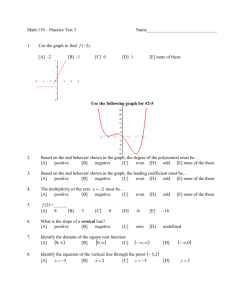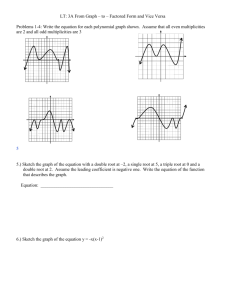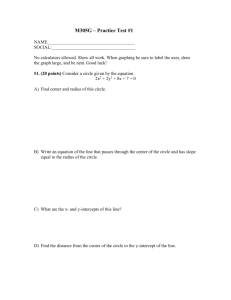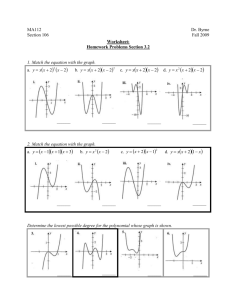2.3: Graphing Polynomial Functions Day 2
advertisement
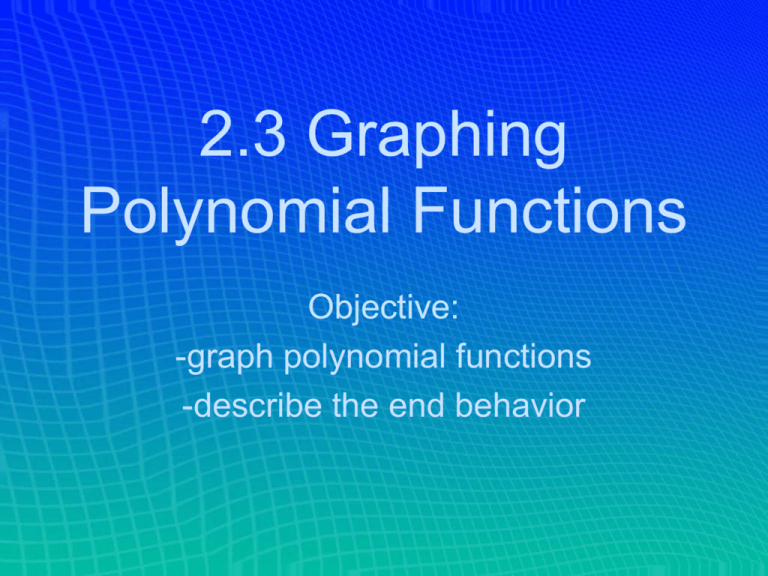
2.3 Graphing Polynomial Functions Objective: -graph polynomial functions -describe the end behavior Recall from yesterday What cubic functions look like… Must have 3 zeros! (real or imaginary) Will cross x-axis 3 times (usually) What quartic functions look like… Must have 4 zeros! (real or imaginary) Will cross x-axis 4 times (usually) Sketching the Graph of a Polynomial What I expect: • The zeros of the polynomial • Appropriate end behavior Sketch the Graph of a Factored Polynomial • Sketch the graph of 𝑓 𝑥 = (𝑥 + 1)(𝑥 − 1)(𝑥 − 2) – Find and plot zeros – Determine the end behavior – Graph it! Sketch a graph: f(x)= (x-3)(x+1)(2x-1) Sketch a graph: f(x)=(x+3)(x+1)(x-1)(x-2) Sketch a graph: f(x) = -x(x+2)(x-1) Sketch a graph: f(x) = x(x+3)(x-4)(1-x) Sketch a graph: f(x) = (x-1)(x-3)2(x-4) Uh oh! We have 2 of the same root. What happens now? The double root is tangent to the x-axis (the curve “bounces off” the x-axis). Analyze the effect of a repeated factor (multiplicity) • Summary: – Even multiplicity: then the graph is tangent to the x-axis at the zero. – Odd multiplicity: then the graph crosses the xaxis at the zero. Sketch a graph: f(x) = (-x-1)(x-3)2 Sketch a graph: f(x) = x4(x − 2)3(x + 1)2 Now, we aren’t just given the roots. How can we sketch a graph from this? 𝑓 𝑥 = 𝑥 3 − 4𝑥 Practice Sess • Source: Textbook • Page: 66 • Problems: #1-9 (odds), #13, #15 Homework • In your textbook complete #2-16 (evens) on pg. 66



